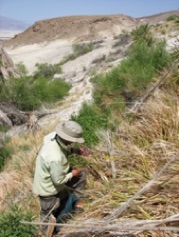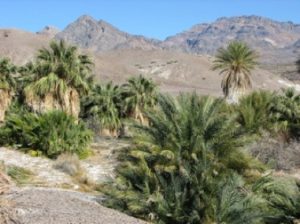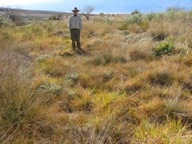Death Valley is the lowest elevation, driest and hottest location in the western Hemisphere. Located in the Mojave Desert most of the landscape experiences extreme aridity with average annual precipitation of only 2 inches, and summer temperatures often exceeding 120F, and occasionally 130F. However, large spring complexes occur that support wetland and riparian ecosystems. The water supporting springs discharges from carbonate aquifers that originates in Nevada and flow southwest. The freshwater springs are of several types including large travertine mounds where water from the carbonate aquifers rises from faults to discharge at the surface, and seeps where these same waters discharge into large alluvial fans and flows down-gradient where it discharges where it meets the Funeral Formation. The springs support herbaceous plants and Pluchea sericea (arrowweed), with mesquite (Prosopis pubescens and P. velutina) along the washes. Exotic palms (Washingtonia filifera and Phoenix dactilifera) also occur at the springs. The spring water has largely been diverted at their source for human use in hotels, restaurants, a golf course and National Park Service housing and visitor services. Following the completion of the Final Environmental Impact Statement “Reconstruction of the Furnace Creek Water Collection System”, the NPS installed new ground water pumping wells to supply water from alluvial fan complexes to support all visitor services. Thus, the infrastructure used to capture water from the springs is no longer needed, and the springs can be restored. This project was initiated to characterize the hydrologic functioning and vegetation of springs in the Nevaris, Texas and Travertine Spring complexes, and to work with NPS staff to suggest restoration options for the Travertine spring complex.


